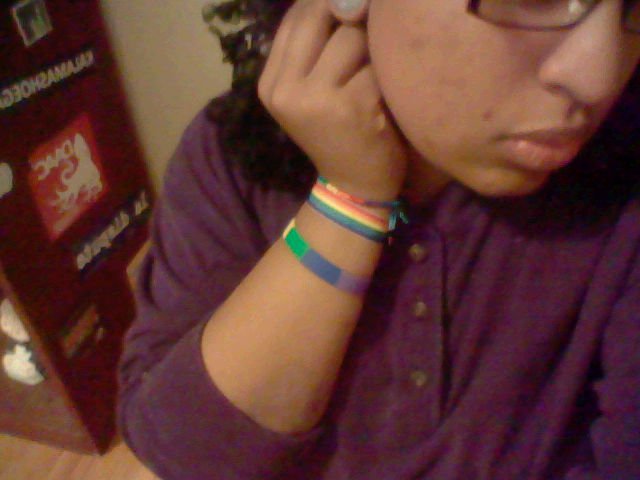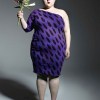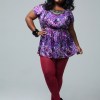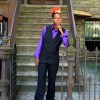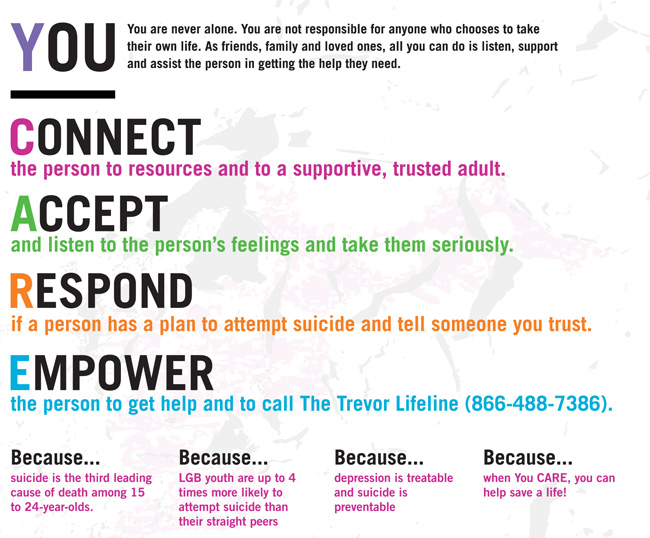We Still Need Spirit Day: Remembering How It Started and Who It’s For
Early Fall, 2010. The queer community was in the midst of crisis, being rocked by a recent rash of suicides committed by young queer kids, victims of anti-queer bullying. On Tumblr, us in the LGBTQ+ community were following each new heart-wrenching report and their saddening details, each life lost, with heavier and heavier hearts. Misery, hopelessness, turmoil, and fear were settling in. It seemed as if each time someone made a post saying “Remember Tyler Clementi, Remember Raymond Chase,” cruelly, unfairly, there was yet another name to add to the list. There was fear at how not only we were dying, but how little people seemed to care at all, or connected the dots between each of these incidents.
Then in came Brittany McMillan, a young Tumblr user who heard and saw the reports and felt the need to step up and speak to them. She came up with the idea of getting together to wear purple, the color representing “Spirit” on the Pride flag, in remembrance and support of those queer teens who have committed or struggle with suicide due to anti-queer bullying, harassment, and alienation. The day picked was October 20th. Eager to do something visible and positive and productive with our grief and rage, we latched onto the wonderful idea and spread the word like wildfire.
So when the 20th came, we proudly posted our purpled selfies, our purpled signs of solidarity and love and support, our purpled layouts, our purpled art and media, our purpled poems, our spirits out in full. My dash was nothing but purple as far as the hand could scroll. We showed love and support for each other. Each time I saw the purple, my heart swelled with pride and joy about what I was a part of creating, and what we were observing and remembering. From the hurt and the suffering came so much good, so much light, so much love. We also fielded all types of hateful, dismissive nonsense endlessly in reblogs, in our inboxes, and with memes. Everything from “But what about other victims of bullying?!” and “Equality means we shouldn’t even talk about gay bullying!” was carelessly leveled our way, but we clapped back.
I even made a handy-dandy “Spirit Day Bingo” board.
(In retrospect, it’s missing a row and it could be more inclusive, but it resonated with a lot of folks on Tumblr nonetheless and got a lot of shares and helped as a shorthand to combat the dismissal and bigotry we were hearing about this day of remembrance and solidarity.)
Eventually, the movement got big enough that Tumblr changed its color from the deep blue to purple for the day. It went viral, and went to officially being observed on the 16th of October every year. It warms my heart to see how big it has gotten; a thing that a young girl started on a young blogging platform becoming nationally recognized is pretty amazing and powerful.
Now, as we go into the fourth year of Spirit Day, we have to keep in mind that this should be more than just kind, reaffirming platitudes that make it seem like queer suicide is solely about queer youths’ own sense of worth or mental health and a need for love, though that is a very important aspect of it. It is about how a cissexist, heterocentric, binarist patriarchal culture diminishes those things and pushes our youth to that extreme point of hurt and self-hate, and leaves them without many options. There was an infographic I shared on Tumblr at the time of the first Spirit Day, and it said “There are no queer teen suicides, only queer teen murders,” and it felt true. We — whether in our hatred, ignorance and bigotry, innocent or not; or in our compliance or ignorance towards these systems that undermine our youth, driving them from their family, friends, homes, farther from themselves, into the streets, to the brink — are slowly killing them.
We have to, then, show them we want them to live. We need to advocate and fight for justice and for resources and for safety for our youth. We have to give them strength and support and love and guidance. We have to care about the lack of access to mental health and homelessness resources for them, especially those who are working class, trans, and/or of color. We have to care about transphobic school policies that infringe on students’ identities and rights, facilitate violence against them, and drive them further away from their peers and community. We have to care about patriarchal norms and dynamics and language and how gender, sexuality, and sexual dynamics even at a very young age in grade school reinforces and starts a lot of toxic habits that can manifest dangerously later in teen years. We have to say “You, love, have spirit like nothing and no one else, and it is so beautiful. And so, I will stand behind you, with you, even when you don’t feel like you can get up.”
If you or anyone you know is struggling with thoughts of suicide, please contact:
- The Trevor Helpline (For homosexuality questions or problems): 1-800-850-8078
- Gay & Lesbian National Support: 1-888-THE-GLNH (1-888-843-4564)
- Gay, Lesbian, Bisexual, and Transgender (GLBT) Youth Support Line: 1-800-850-8078
For Homeless/At Risk Youth:
- National Runaway Switchboard: 1-800-RUNAWAY (A national, toll-free hotline for runaway and homeless youth, teens in crisis and concerned family/friends. Completely confidential.)
- A pretty cool Masterlist of inclusive resources for youths of color
Spirit Day Gallery: 50 Ways Of Feeling Smokin’ Hot In Purple
Today is Spirit Day, a GLAAD-sponsored situation via which millions of human beings wear purple to show their solidarity with LGBT teens and their desire for LGBT teens to be accepted/loved rather than beat up, teased and destroyed. You can learn more and go purple on the glaad website:
Millions wear purple on Spirit Day as a sign of support for lesbian, gay, bisexual and transgender (LGBT) youth and to speak out against bullying. Spirit Day was started in 2010 as a response to the young people who had taken their own lives. Observed annually, individuals, schools, organizations, corporations, media professionals and celebrities wear purple, which symbolizes spirit on the rainbow flag. Getting involved is easy — participants are asked to simply “go purple” on October 19th as we work to create a world in which LGBT teens are celebrated and accepted for who they are. Learn more & go purple at www.glaad.org/spiritday.
Especially heartwarming is the Spirit Day Ambassadors Page, which features young activists like Katy Butler as well as high-profile and very attractive celebrities including actress Dianna Agron, transgender writer/activist Janet Mock and actress Shay Mitchell.
In honor of this esteemed holiday, we have collected a lovely gallery of hot girls wearing purple in some capacity. Perhaps this will provide you with fashion inspiration for anybody planning on leaving the house today. (A * next to a photo caption means the subject(s) of the photo are queer)
We’ve gone purple on our twitter today and you should too. Let us know how your Spirit Day is going and how you feel about Whitney Houston’s amazing purple puffy jacket in the comments!!
- *Beth Ditto
- Jourdan Dunn
- via prettyplussize.tumblr.com
- *Kathy Harris
- *andrea and alice, photographed by ericacamilleproductions.com, via offbeatbride
- Jessie J *
- Lakshmi Menon
- *via fuckyeahasiandykes.tumblr.com
- via modelsofcolor.tumblr.com
- Crystal Renn
- via modelsofcolor.tumblr.com
- Shay Mitchell
- *Rachel Maddow
- *Hunter Valentine
- via liquorinthefront.tumblr.com
-
1975 — Diana Ross in Gown from
— Image by © Steve Schapiro/Corbis
- *Jasika Nicole
- via meagancignoli.tumblr.com
- *Ellen Degeneres
- Jennifer Beals as Bette – Photo: Naomi Kaltman/Showtime – Photo ID: l_word_gal4_Jennifer_055
- Yasmeen Ghauri via Vogue Italia, 1992
- Jasmine Tookes
- Nina Dobrev
- Tenika Davis
- via moreassthanthemodels.tumblr.com
- Naya Rivera (photo by Adriana M. Barraza/WENN.com)
- Sarah Shahi
- Christina Hendricks
- Naomi Campbell
- *Haviland Stillwell
- *photo from dapperq via flickr.com/photos/dapperq/6192670592/in/photostream/
- via prettyplussize.tumblr.com
- Whitney Houston
- *Shavonda and Naomi via soyoureengayged.com, photo by Sarah Maren – sarahmaren.com
- *Nirvana Savoury
- via bettychantel.tumblr.com
More Visible Than Purple: LGBT Kids and the Road to Safer Schools
Last Thursday, schools, companies, media outlets, and individuals were encouraged to “go purple.” No doubt, many of you wore purple t-shirts or, for those of us lacking purple wardrobe options, turned your facebook or tumblr purple to celebrate Spirit Day — a GLAAD-sponsored event to show “support for LGBT youth and to speak out against bullying.”
I don’t know the statistics, but I’m guessing a LOT of people “went purple.”
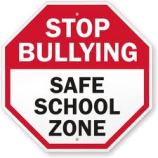 Are our schools safer today because of it? I mean, yes, I tweeted for #SpiritDay; I tried to find something purple to wear. I showed my support and stood up against anti-LGBTQI bullying. I’m all for solidarity and visible allies, but really – is a gay kid safer in school today because half of his peers wore purple? Will the trans girl in 9th grade start feeling safer now?
Are our schools safer today because of it? I mean, yes, I tweeted for #SpiritDay; I tried to find something purple to wear. I showed my support and stood up against anti-LGBTQI bullying. I’m all for solidarity and visible allies, but really – is a gay kid safer in school today because half of his peers wore purple? Will the trans girl in 9th grade start feeling safer now?
The question here is not about the efficacy of #SpiritDay and similar campaigns against bullying; what I’m questioning is the scope of these efforts. What does it mean for LGBTQI kids to be safe at school? Does school safety only mean protection from physical and verbal assault?
Let’s step back for a second, to our school days. Maybe some of you are still in school and won’t have to move through the cobwebs in memories like the rest of us (I turned 24 recently and middle school seems like ages ago).
What did you get out of school? An education? Fine motor skill development? A friend group? A loose direction in life? The development of an ultimately lifelong passion? A respect for authority and walking in straight lines? Probably these things. How about identity development? I wish we were all in a room so I could say, “If you are LGBTQI, could you please raise your hand if you believe you had room to develop your identity at your preK-12 schools? Your full identity?”

Right there with you, Zooey
Listen, I’m not raising my hand, and my queer and trans friends aren’t either. Almost every school lists in their mission or their educational philosophy that they want to develop the “whole child.” They’re shaping people not manufacturing educated machines. And yet, there was a very large part of my identity that I didn’t even get to explore in school. I am of course talking about my gender identity and my sexuality. I was talking to friends about this recently – about how I was never offended by the fact that I couldn’t bring a girl to a dance, for example (oh remember that at this time I was presenting as a woman, didn’t know I was a guy, and sort of identified as a lesbian). My friends agreed that we just assumed school wasn’t the place for that part of us.
But looking back, school did seem to be the place for that part of my straight and normatively-gendered peers. Heterosexual, cisgender people, for the most part do get to develop their gender and sexual identities in school. From early childhood through high school graduation, schools seem a little more committed to the development of the whole child for those guys.
How?
+ Through the families depicted in children’s books
+ Role-playing options in PreK and Kindergarten
+ Characters studied in literature and film
+ Gender segregation (boys’ line, boys’ sports, boys’ bathrooms)
+ Pairings supported by faculty and administration (whether it’s a teacher commenting on the cute “couple” in 1st grade or the awarding of Homecoming King and Queen – again, gendered – to the well-liked straight couple in high school)
+ Alums whose weddings or work are celebrated in publications
+ Sex education classes that only talk about heterosexual sex or marriage
+ Teachers who talk about their personal lives and families
+ Photos on seemingly-benign motivational posters or in textbooks
+ Science courses that only address the binary sexes and genders in biology
+ History lessons that include spousal and familial details for heterosexual figures, but not homosexual figures.
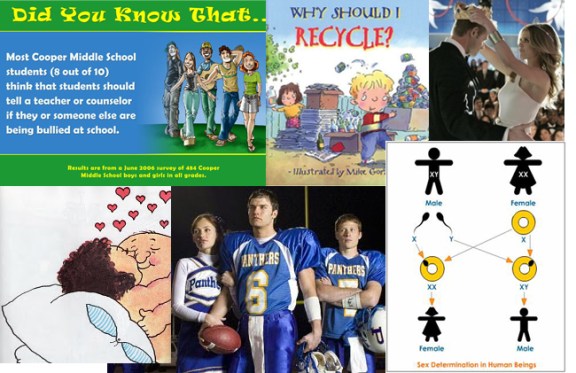
From the seemingly-benign to the explicit, from classroom lessons to social traditions, schools are constantly presenting normative messages about gender and sexuality
School life from age 3 to 18 has images of what it is to be boys and men and what it is to be girls and women in our society. If you’re lesbian, gay, bisexual, queer, transgender, intersex or even gender non-normative (the butch girl or effeminate man), don’t count on having your gender or sexual identities represented, let alone celebrated, like those identities of heteronormative students. How can students feel safe – or even BE safe – at school when parts of their identities are ignored and even denied 8 hours a day, for 13-14 years?

Adrienne Rich
Adrienne Rich (who has been one of my heroes since I was 15 or 16 – she’s brilliant right? I saw her do a reading once and almost died… but now I’m rambling) captured the significance of this lack of room for identity development in her 1984 essay Invisibility in the Academe:
“When someone with the authority of a teacher, say, describes the world and you are not in it, there is a moment of psychic disequilibrium, as if you looked into a mirror and saw nothing.”
Yes, the bullying needs to be curbed. It is hurting our students. It is the catalyst leading them to take their lives. But I think the bullying would be far less potent (and perhaps even less frequent on the end of the bullies themselves) if LGBTQI students weren’t looking into a blank mirror.
So I’m going to use Rich’s simile here and say that real school safety for LGBTQI students means being able to look in that mirror and see themselves, and to see possibilities of whom they might become. Being safe in school in its simplest step means being visible and having the affirmation and opportunities that come with that visibility.
Rich also writes that invisibility is a way of fragmenting people, of preventing them from integrating the different components of their identities and feelings and ideas. This invisibility is preventing schools from completing their missions of developing the whole child. Further, years and years of invisibility of one group and visibility of another unconsciously establishes a hierarchy – why wouldn’t a straight, masculine student (who sees himself and his relationships celebrated daily) feel his identity was more valid or “better” than the effeminate bisexual male student (whose sexual and gender identities have never even been discussed in school)?
- A harassment policy or student bill of rights that explicitly includes sexual orientation and gender identity/expression that is being implemented, monitored, and enforced
- Annual, mandatory training for teachers, counselors, librarians, nurses, and other staff about sexual orientation and gender identity, and on anti-GLBT bullying intervention
- A student group for GLBT and straight students
- Accurate information in the library on GLBT lives, history and issues
- Accommodations for students identifying as transgender including bathroom use, dress codes and athletic teams
- Resources for parents and family members of GLBT people
- A GLBT-inclusive curriculum – including current events, history, social studies, literature, political science, health, arts, etc.
I think there is way more to be done. LGBTQI people and lives need to be fully integrated into school life. We need to reevaluate the purposes of certain traditions and social events, and expand them to be inclusive of non-normative genders and non-heterosexual pairings. We need LGB families to be presented as normally as heterosexual families (though admittedly less frequently, as representative of the population) – for example, the problem solving questions in children’s math classes could every once and a while include two dads. Or cheesy posters that feature girls with short hair and loose-fitting clothing? And how about publishing a story about an alum working for marriage equality or trans rights? It’s not just about studying the contributions of LGBTQI people, it’s about reflecting our presence in day-to-day life. It’s about giving students a reflection of their own identities and providing them with role models and ideas of what it means to emerge from adolescence and into adulthood with those identities.
Don’t get me wrong – I want to thank all of you for going purple. I commend the anti-bullying campaigns, I commend the LGBT-support campaigns, the GSAs, the messages of stopping the hate. They’re all doing important work. But you know? Even more, I commend the school districts making LGBT-inclusive curriculums mandatory.
There’s so much more work to be done. We can’t keep failing these kids. In the Rich quote I used earlier, she concludes with this:
“Yet you know you exist and others like you, that this is a game with mirrors. It takes some strength of soul–and not just individual strength, but collective understanding–to resist this void, this nonbeing, into which you are thrust, and to stand up, demanding to be seen and heard.”
Five year olds, 6 year-olds, even 16 and 18 year olds don’t always have that kind of strength. Some don’t even know others like them exist. It’s up to us — the advocates, the educators — to help them fight this invisibility, to help them be seen and heard, and to give them the opportunity to develop their whole and many identities.
—
In addition to writing for AS, Sebastian is a research assistant to Dr. Jennifer Bryan, a psychologist and educational consultant who works with schools to help them acknowledge and address (and ultimately embrace) the diversity of sexual and gender identities, expressions, and behaviors among their students, families, teachers and communities. If you’re looking for more on this topic or for a more strategic and pedagogical approach, keep an eye out for her book, From the Dress-Up Corner to the Senior Prom: Navigating Gender and Sexuality Diversity in PreK-12 Schools, which will be coming out next year.
Ten Things That Are Purple, Like The LGBTQ Spirit Day Shirt You Wore Last Week
I’ve been trying to write this post since LGBTQ Spirit Day, which happened last Wednesday and went like this:
… Spirit Day, first created by teenager Brittany McMillan earlier this month… honors the teenagers who had taken their own lives in recent weeks. But just as importantly, it’s also a way to show the hundreds of thousands of LGBT youth who face the same pressures and bullying, that there is a vast community of people who support them.
Purple symbolizes ‘spirit’ on the rainbow flag, a symbol for LGBT Pride that was created by Gilbert Baker in 1978.
As one of the event’s Facebook pages says: “This event is not a seminar nor is it a rally. There is NO meeting place. All you have to do is wear purple.”
Literally every time I start to write this post, someone else dies (or not) and then I write about that instead, and then I’m playing Scrabble in the backyard, shielding the sun from my eyes, lamenting our country’s inability to magically transform along with the weather at nightfall into the things I’ll dream about later on. Not literally the things I dream about. But in spirit. I still have this sorta naive/sheltered idea that it’s possible for things to change dramatically even in our own lifetime, if somebody could just find the right words. I think that’s what I like/d about Obama. I think that’s why writers and journalists loved Obama, too, because we wanted to believe in the power of his unbeatable rhetoric. I think that guy has the right words. How do we make him say them.
I’m not sure what it looks like on the ground. What was Spirit Day like in your school and home?
I found myself wondering “would Asher Brown have worn a purple t-shirt to school, if he’d lived for this day?” Because maybe not. Would those eschewing purple have made a subtle but nevertheless audible statement themselves, would their refusal make things seem worse in parts of the country where things were already bad? Would I have worn purple, if it’d happened when I was young? If my friends wore purple shirts, I would’ve worn one too. That would’ve been the only factor, really.
The point is the conversation, of course. Purple starts the conversation, and it’s also my favorite color. Purple shows Asher Brown that people care
Spirit Day means something because it started conversations. That’s the thing. And all the famous people wore purple, at least.
However, now that it’s taken me an entire week to write this post, Spirit Day is no longer newsy and so therefore I was forced to change the topic of this post into something less time-sensitive. Like The Color Purple itself!
I have changed the Topic of the post from “Top Ten Best Parts of Spirit Day” to “Top Ten Best Parts of Being the Color Purple.”
Top Ten Super Awesome Purple Things
+
10. TEGAN’S SHIRT ON SPIRIT DAY

This is Tegan, right? I consulted with a semi-expert but I can never be too sure.
+
9. Jimi Hendrix – Purple Haze
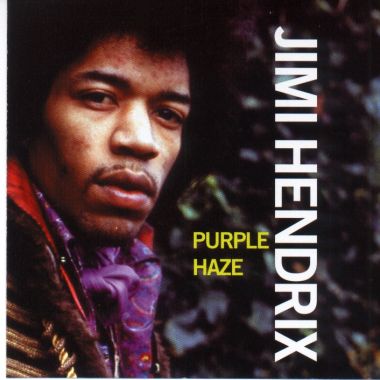
Jimi Hendrix is dead, which is unfortunate because JIMI HENDRIX IS GOOD. Purple Haze is kindddaaaaaa a drug anthem/”archetypical psychedelic drug songs of the sixties.” It’s from the 1967 album Are You Experienced from THE JIMI HENDRIX EXPERIENCE.
+
8. Purple Muppets
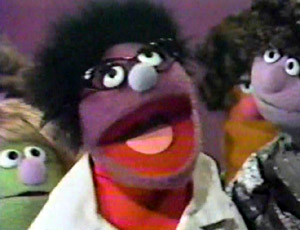
The Muppet Wiki is one of my favorite places on the internet. Here’s all the muppets that were made from the “purple rod puppet” prototype. One puppet and so many possibilities.
Some purple muppets worth noting:
The Hipster: “a jazzy character who appeared in the Sesame Street version of the “Visual Thinking” sketch, alongside the Square.”
The Purple Hippie: Performed “Good Morning Starshine” along with Bob in the first season of Sesame Street.
Big Bippadotta: The inspiration for scribegrrrl’s fashionable face, Big Bippadotta is most famous for performing the nonsense song “Mahna Mahna.”
Teresa: This trailblazing lady decided to apply her skills as a seamstress to a new career as a medical surgeon, inspiring women all over the world to go to med school and accrue debt and then work as a doctor to pay it off.+
+
7. Everyone Looked Super Cute in Purple on Spirit Day to Support LGBT Youth!

SUPER FAMOUS Participants in The Spirit Day Spirit included Hilary Clinton, Jane Velez-Mitchell, Keith Olberman, Ellen DeGeneres, Kristin Chenoweth, Dixie Chicks, Chris Colfer, Rickie from My So-Called Life, Kathy Griffin, Perez Hilton, Jewel, Cyndi Lauper, Ricky Martin, Lea Michele, Ani DiFranco, Kate Walsh, Chely Wright, Lea Salonga and Alyssa Milano.
+
6. Bishop John Shelby Spong’s Shirt:

Have you read his manifesto yet. You really should.
I have made a decision. I will no longer debate the issue of homosexuality in the church with anyone. I will no longer engage the biblical ignorance that emanates from so many right-wing Christians about how the Bible condemns homosexuality, as if that point of view still has any credibility. I will no longer discuss with them or listen to them tell me how homosexuality is “an abomination to God,” about how homosexuality is a “chosen lifestyle,” or about how through prayer and “spiritual counseling” homosexual persons can be “cured.” Those arguments are no longer worthy of my time or energy… The world has moved on, leaving these elements of the Christian Church that cannot adjust to new knowledge or a new consciousness lost in a sea of their own irrelevance. They no longer talk to anyone but themselves. I will no longer seek to slow down the witness to inclusiveness by pretending that there is some middle ground between prejudice and oppression. There isn’t.
+
5. The Color Purple
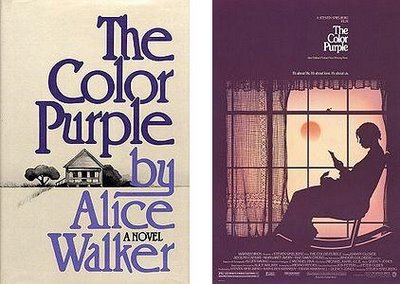 The Color Purple is a very good book with homosexual tendencies. Also a movie, also a musical, also a color and that color is you guessed it PURPLE.
The Color Purple is a very good book with homosexual tendencies. Also a movie, also a musical, also a color and that color is you guessed it PURPLE.
+
4. Johnny Weir’s Army of One T-Shirt:
Um, where do we begin? To tell a story of how great Johnny Weir’s hair can be?

In Johnny Weir’s Army, asking and telling is a bit easier. You just have to get a t-shirt! All the proceeds go to the Trevor Project which works to prevent suicide especially in the LGBT youth communities.
+
3. Harold & The Purple Crayon
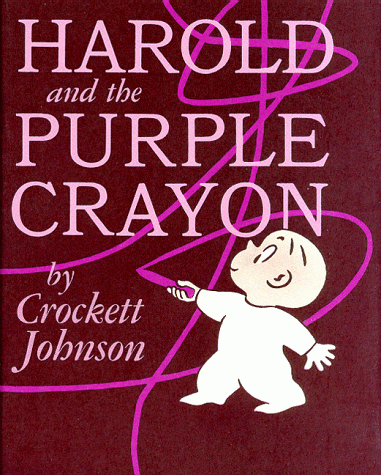 This is a fantastic book about how even if you are gay, you can draw a path for yourself and then walk on it. Also you can create the sun, moon and stars from a blank canvas, even if you live in Greenland.
This is a fantastic book about how even if you are gay, you can draw a path for yourself and then walk on it. Also you can create the sun, moon and stars from a blank canvas, even if you live in Greenland.
+
2. Purple V-Neck T-Shirts from American Apparel

You can get a tri-blend v-neck in Orchid for $12.99 right now just saying. Or a Unisex Deep-V t-shirt for $8.99. Then every day can be spirit day.
+
1. 19,000 Tumblr Re-Blogs of this Graphic:
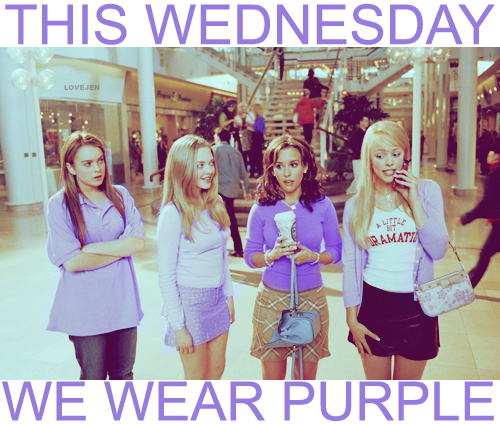
![]()
